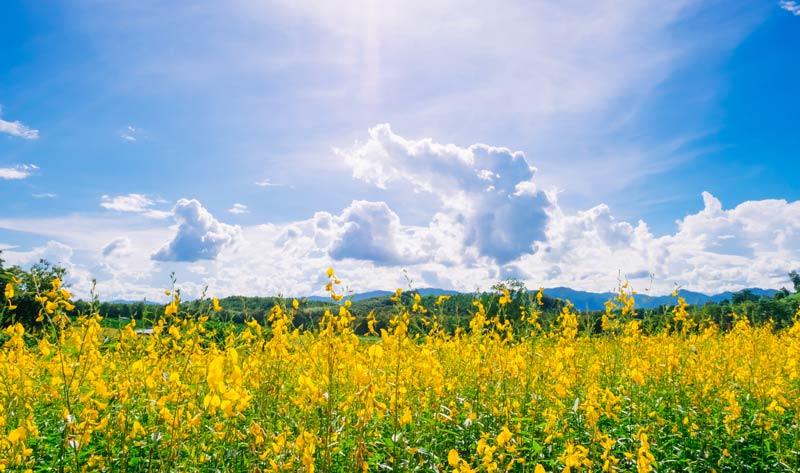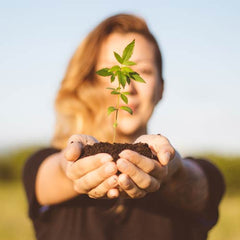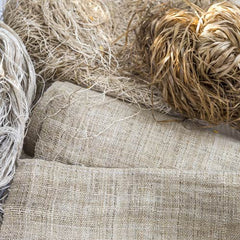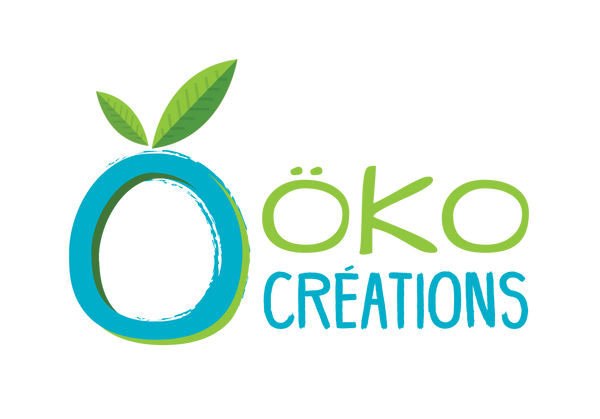
Hemp: A Green Ally
Share
In a sustainable lifestyle, several factors need to be considered to reduce our ecological footprint: transportation, housing, food, consumption habits, and waste. With the aim of making eco-conscious purchases, factors such as proximity of production, a healthy work environment respectful of its employees, and the choice of raw materials are constraints to be taken into account.

Going against the current in their initial approach, Öko creations chose to prioritize hemp fiber in several of their products even though the Canadian market wasn't publicizing or really offering this raw material. Let's explore why this choice is more relevant than ever today...
What is hemp?
Industrial hemp should not be confused with cannabis; it is the THC (delta-9-tetrahydrocannabinol) content that distinguishes each species. Below 0.3%, it is considered industrial hemp, the cultivation of which is currently allowed but heavily regulated by the Canadian government (see Industrial Hemp Regulations). Above 5% THC, it is referred to as recreational cannabis, and its legalization took place on July 1, 2018 (Bill C-45, see Cannabis Act). Hemp has long been sidelined (becoming illegal in 1938, only to have hemp strains reauthorized in Canada in 1998); however, its numerous virtues have been utilized for centuries.
A variety of uses
Nutritious

For body and skin. Hemp seeds are considered a "superfood," rich in proteins, fatty acids, vitamins, and minerals, good for the heart and brain. Hemp oil, on the other hand, is recommended for counteracting high blood pressure because its proportions of fatty acids are ideal. Also used in cosmetics, it has nourishing, moisturizing, and anti-aging properties (see Quebec Hemp).
Insulating
Hemp houses are not only eco-friendly but also highly effective, even in Quebec winters. Hemp is used as insulation, which helps retain warmth in winter and keep cool in summer. Moreover, these are breathable houses with often a neutral carbon footprint (the negative emissions from manufacturing and transportation are outweighed by the carbon sequestration provided by this type of wall). An expert in the field (http://maisonenchanvre.com/) can explain it better than I can.
Resilient: Hemp fiber has long been used for making sails and boat ropes. In fact, Logistik Unicorp-Régitek created the first combat uniform for the Canadian military using hemp fiber, introduced in May 2017. However, hemp military clothing was already present during both world wars.
Ideal for weaving

Hemp fiber is one of the oldest textile fibers found (in antiquity). It does not require any chemical treatment (unlike cotton or bamboo) because its processing is mechanical (retting, crushing, scutching, and combing). It is naturally antibacterial, antifungal, and resistant to ultraviolet rays (harmful solar radiation to the skin).
Hemp is a preferred option for the manufacturing of Cloth Pads
It is this latter virtue that Öko Créations wanted to take advantage of. A textile fiber that softens with each wash and can be blended to make it silkier, making it an ideal material for sanitary towels, nursing pads, or makeup removal pads.
Additionally, hemp cultivation is simple and natural, and the use of pesticides is not necessary because it is not susceptible to attacks by pests. Being low in water consumption, it easily surpasses cotton when aiming for sustainable agriculture. Its yield (i.e., the area versus the quantity of plants) is high and fast, and it can be cultivated in our latitudes.
In conclusion, choosing hemp fiber as a raw material is an informed choice, a natural fabric from here, resistant to frequent washing (long live parenthood!), requiring few resources for its cultivation, processing, and manufacturing, making it the best ecological choice in Quebec's textile industry.
So if you haven't tried it yet, whether in your plate, in your home, or on yourself, now is the time to give it a try!
 Aurore Lecocq
Aurore Lecocq
Sources
Hemp from Quebec www.chanvrequebec.com
Cannabis law https://cadrecannabis.gouv.qc.ca/loi/cadre-du-cannabis-au-quebec/
Industrial Hemp Regulations http://laws-lois.justice.gc.ca/eng/regulations/SOR-98-156/page-1.html#h-1
Items
Hemp in military uniforms July 11, 2017. Le Soleil https://www.lesoleil.com/affaires/du-chanvre-dans-des-uniformes-militaires-7d7b9ca98fb7b702b7267cea6171d9ae
The hemp industry in Canada, the Great Return? February 16, 2017
http://blogs.mcgill.ca/agtalk/2017/02/16/la-filiere-du-chanvre-au-canada-le-grand-inverse/
